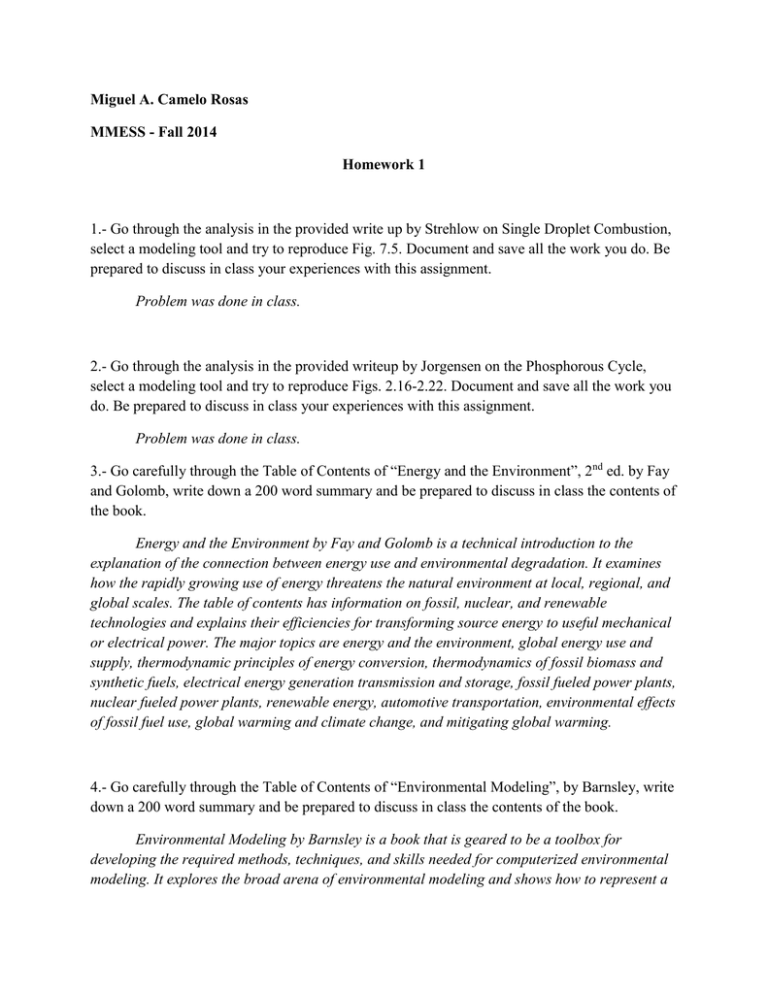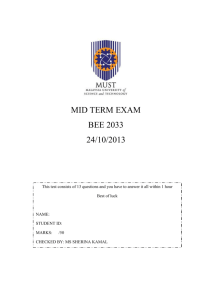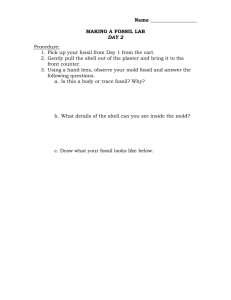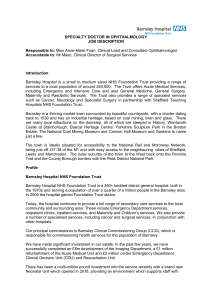Miguel A. Camelo Rosas MMESS - Fall 2014 Homework 1
advertisement

Miguel A. Camelo Rosas MMESS - Fall 2014 Homework 1 1.- Go through the analysis in the provided write up by Strehlow on Single Droplet Combustion, select a modeling tool and try to reproduce Fig. 7.5. Document and save all the work you do. Be prepared to discuss in class your experiences with this assignment. Problem was done in class. 2.- Go through the analysis in the provided writeup by Jorgensen on the Phosphorous Cycle, select a modeling tool and try to reproduce Figs. 2.16-2.22. Document and save all the work you do. Be prepared to discuss in class your experiences with this assignment. Problem was done in class. 3.- Go carefully through the Table of Contents of “Energy and the Environment”, 2nd ed. by Fay and Golomb, write down a 200 word summary and be prepared to discuss in class the contents of the book. Energy and the Environment by Fay and Golomb is a technical introduction to the explanation of the connection between energy use and environmental degradation. It examines how the rapidly growing use of energy threatens the natural environment at local, regional, and global scales. The table of contents has information on fossil, nuclear, and renewable technologies and explains their efficiencies for transforming source energy to useful mechanical or electrical power. The major topics are energy and the environment, global energy use and supply, thermodynamic principles of energy conversion, thermodynamics of fossil biomass and synthetic fuels, electrical energy generation transmission and storage, fossil fueled power plants, nuclear fueled power plants, renewable energy, automotive transportation, environmental effects of fossil fuel use, global warming and climate change, and mitigating global warming. 4.- Go carefully through the Table of Contents of “Environmental Modeling”, by Barnsley, write down a 200 word summary and be prepared to discuss in class the contents of the book. Environmental Modeling by Barnsley is a book that is geared to be a toolbox for developing the required methods, techniques, and skills needed for computerized environmental modeling. It explores the broad arena of environmental modeling and shows how to represent a problem in conceptual terms, formalize that using environmental expressions, convert the mathematical model into a program that can be run on a computer, and examine the results produced by the model. The table of contents has the major items of models and modeling, visualizing environmental data, processing environmental data, wind speed and wind power, solar radiation at the Earth’s surface, light interaction with plant canopy, analytical and numerical solutions, population dynamics, biospheric feedback on daisyworld, modeling incident solar radiation and hydrological networks over natural terrain, and installing and running the included GAWK free license software.




